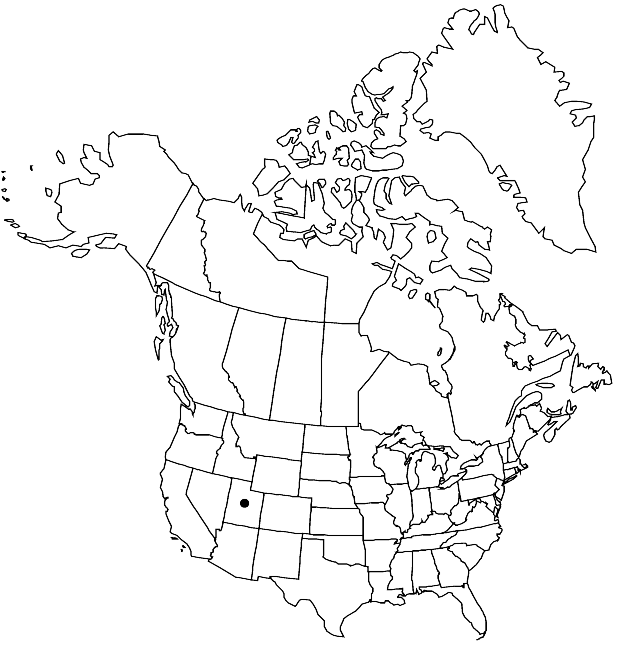Boechera harrisonii
Harvard Pap. Bot. 11: 266. 2007.
Perennials; long-lived; (some-what cespitose); apomictic; caudex often woody. Stems usually 3–7 per caudex branch, arising from margin of rosette near ground surface, 0.5–2.5 dm, usually sparsely pubescent proximally, rarely glabrous, trichomes short-stalked, 2- or 3-rayed, 0.06–0.2 mm, glabrous distally. Basal leaves: blade narrowly oblanceolate, 2–4 mm wide, margins entire or somewhat dentate, ciliate near petiole base, trichomes (simple), to 0.5 mm, surfaces sparsely pubescent, trichomes short-stalked, 2–5-rayed, 0.1–0.25 mm. Cauline leaves: 3–7, not concealing stem; blade auricles 0.5–1.5 mm, surfaces of distalmost leaves glabrous. Racemes 5–12-flowered, usually unbranched. Fruiting pedicels divaricate-ascending, straight, 8–12 mm, glabrous. Flowers ascending at anthesis; sepals pubescent; petals lavender, 5–7.5 × 0.8–1.5 mm, glabrous; pollen spheroid. Fruits usually divaricate-ascending, rarely nearly horizontal, not appressed to rachis, not secund, curved to straight, edges parallel, 3–4.7 cm × 1–1.5 mm; valves glabrous; ovules 64–86 per ovary; style 0.2–0.5 mm. Seeds uniseriate, 1.1–1.3 × 0.8–1.1 mm; wing continuous, 0.08–0.1 mm wide.
Phenology: Flowering May–Jun.
Habitat: Limestone and quartzite cliffs
Elevation: 1500-1600 m
Distribution

Utah.
Discussion
Morphological evidence suggests that Boechera harrisonii is an apomictic species that arose through hybridization between B. microphylla and B. perennans (see M. D. Windham and I. A. Al-Shehbaz 2007 for detailed comparison). Boechera harrisonii is known only from Utah and Wasatch counties in north-central Utah.
Selected References
None.